Korea has something of a reputation for balancing respect for deep-rooted tradition with a capacity for innovation. It’s a duality that sits at the heart of ‘Korean Culture, Now!’, a year-long initiative organised by the Korean Cultural Centre UK (KCCUK) that aims to bridge Korea’s past, present and future through a range of immersive spaces and musical displays in London.
Korea has long shaped global trends and tastes through sheer artistry – particularly, in recent years, through finely honed pop music. But though K-pop deservedly draws attention, it shouldn’t obscure the country’s rich musical traditions – after all, BTS, Blackpink, Stray Kids et al didn’t arise in a vacuum. ‘Soundwaves of Science: Exploring the Science of Korean Music’, organised in collaboration with the National Science Museum of Korea and now open at the KCCUK (until 27 June), provides a remarkable opportunity to get to grips with Korean musical history. A wide range of instruments, particularly percussion, are available for visitors to play, including the pyeongyeong, a set of 16 carefully sculpted stones hung on a wooden frame and tapped with a cow-horn implement, and the janggu, a double-headed hourglass-shaped drum which, when struck by hand or stick, produces a deeply satisfying sound. Both have been used in Korean court rituals for a millennium or so.
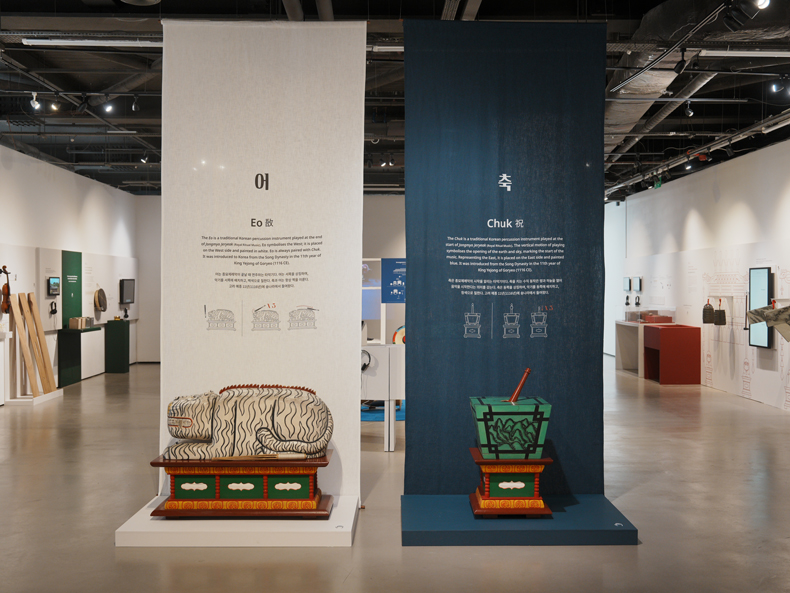
Exhibition view of ‘Soundwaves of Science: Exploring the Science of Korean Music’ at the Korean Cultural Centre UK, London
If this interactive display links Korea’s past and present, ‘Endless Bonds: AI and Korean Heritage’ (17 July–22 August at the KCCUK) brings the country’s past into the future. Organised in collaboration with the National Museum of Korea, a series of immersive digital offerings gives viewers a chance to lose themselves in a range of settings, from age-old landscapes to 18th-century historical scenes. In Endless Mountains and Rivers: A Prosperous World Unfolds in Nature, the 18th-century tradition of ‘true view’ landscape painting – which depicted real places in all their scenic detail – is presented panoramically; the effect is not unlike a handscroll of an idealised landscape.
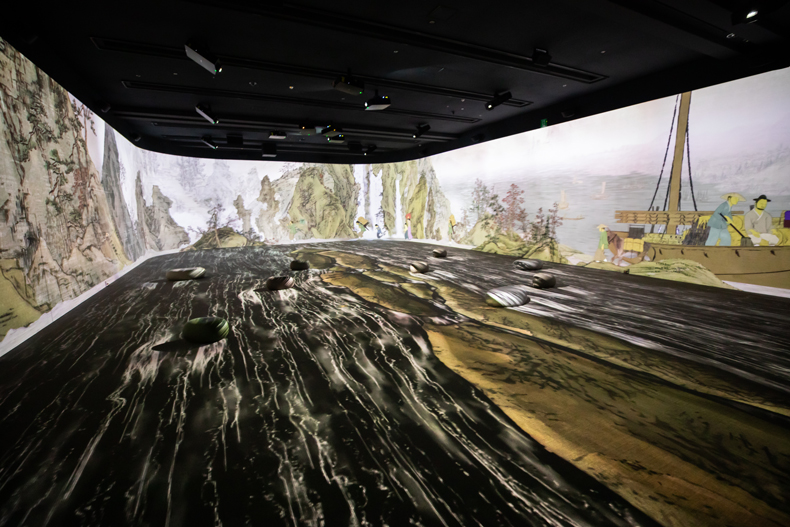
Still from Endless Mountains and Rivers: A Prosperous World Unfolds in Nature. Courtesy National Museum of Korea
Meanwhile, Royal Procession with the People celebrates a more artificial sort of beauty. It brings to life two settings: King Jeongjo’s procession in 1795 to Hwaseong, a city near Korea’s north-western coast, and a banquet he held the following year to celebrate the completion of Hwaseong Fortress, which remains in magnificent condition today. Just as the scale, sophistication and opulence of the procession were meant to impress upon ordinary people the power of the Korean state, this animation – informed by archival records and paintings from the time – is intended to astonish contemporary viewers with a dose of Korean historical culture at its headiest.
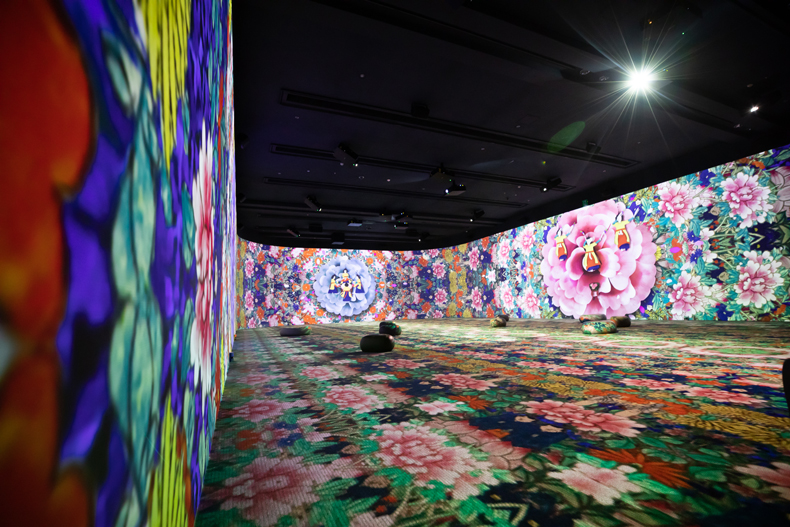
Still from Royal Procession with the People. Courtesy National Museum of Korea
Other immersive recreations are available courtesy of the K-Art Lab, currently at the KCCUK and soon to tour the UK. Seokguram Hyperreal animates a Buddhist stone temple from the eighth century in high definition, conjuring not just the edifice’s geometric design and intricate carvings but the play of daylight and candlelight on granite. Since the interior of the real site, in the mountains of Gyeongju in the south-east of the country, is not accessible to visitors, this textured recreation is especially valuable. Sorabol 1000 is broader in scope: it reconstructs the historic city of Sorabol right down to its topography, vegetation, architecture and everyday material culture, taking enough artistic licence to make it an enjoyably navigable experience for visitors.
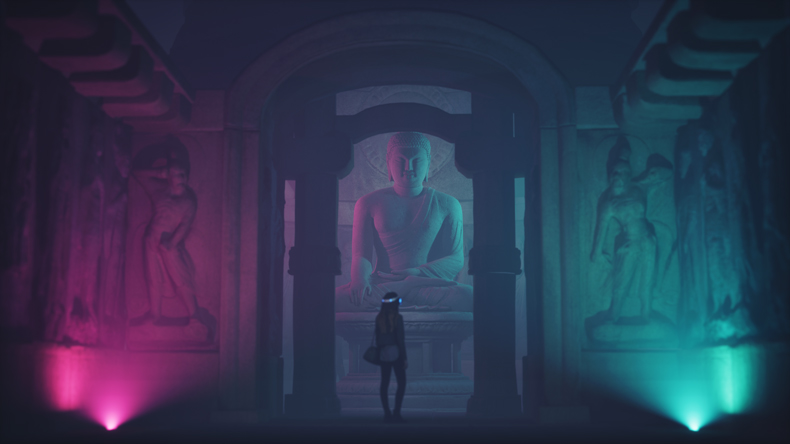
Real-time render image of Seokguram Hyperreal. Courtesy Technology Research Institute for Culture and Heritage
Aside from its human creations, South Korea is replete with stunning natural vistas. ‘Strolling through Korean Gardens’ (11 September–14 November at the KCCUK) does justice to the country’s verdant landscapes by digitally creating a pavilion from which a series of lush gardens can be viewed. The installation, created in collaboration with the Korea Heritage Service, is intended to foster not just a tranquil, appreciative mood but an active engagement with the natural world, however artificial its means of presentation.

Still from Palace Gardens, a Royal Sanctuary. Courtesy Korea Heritage Service
Before it unveils all these immersive landscapes, the KCCUK is making a mission statement of sorts on 9 June at the K-Culture Forum at the Royal Society of Arts in London. Talks about various aspects of Korean cultural influence are being given by Seunghye Sun, director of the KCCUK; Dobin Choi, a lecturer of Korean and comparative philosophy at Leiden University; and Seungkyu Ryan Lee, co-founder of the Pinkfong Company – best-known for producing the extraordinarily catchy children’s tune ‘Baby Shark’. If ever evidence were needed of South Korea’s knack for embedding its products in the global popular consciousness, ‘Baby Shark’ alone rivals any number of K-pop artists.
Sun sums up ‘Korean Culture, Now!’ as a whole: ‘Through cutting-edge technology and within a thoughtful historical framework, this initiative reveals the emotional depth and resonance of Korea’s diverse cultural expressions.’ With all the artistic, musical and technological displays on offer for the rest of the year, you’d be hard-pressed to disagree.
Highlights from ‘Korean Culture, Now!’ can be found here.


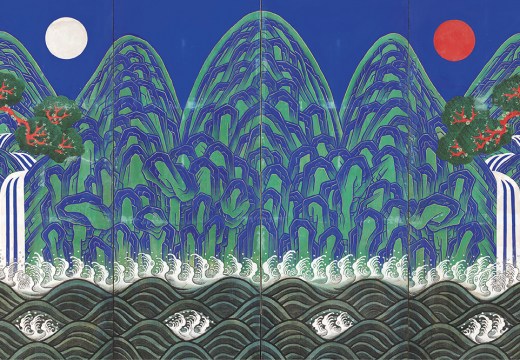
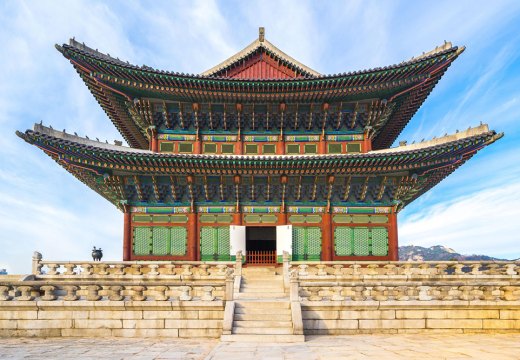
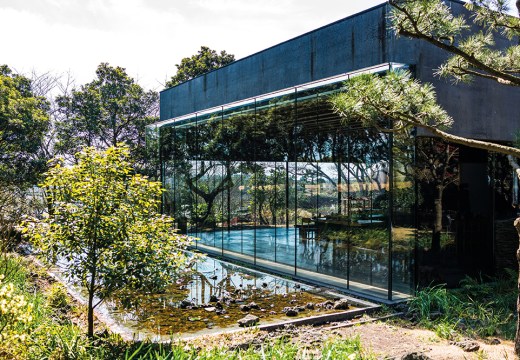









![Masterpiece [Re]discovery 2022. Photo: Ben Fisher Photography, courtesy of Masterpiece London](http://www.apollo-magazine.com/wp-content/uploads/2022/07/MPL2022_4263.jpg)
Suzanne Valadon’s shifting gaze